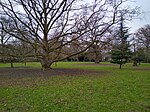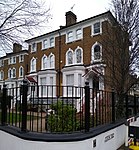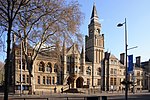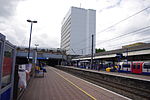St Peter's Church, Ealing
19th-century Church of England church buildingsChurch of England church buildings in the London Borough of EalingChurches completed in 1893Diocese of London
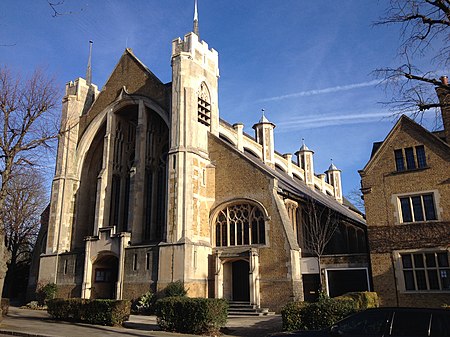
St Peter's Church, Ealing, is an Anglican parish church in Mount Park Road, North Ealing, in the Diocese of London, regarded by John Betjeman as being amongst "the noblest churches we possess". Held to be one of the premier architectural works in Ealing, the Grade II* Listed building is noted for its combination of Arts & Crafts and late-Victorian Gothic as well as its west front and great west window. In addition to Sunday and weekday services, the church and adjacent hall serve as a hub for various community activities and events.
Excerpt from the Wikipedia article St Peter's Church, Ealing (License: CC BY-SA 3.0, Authors, Images).St Peter's Church, Ealing
Mount Park Road, London Perivale (London Borough of Ealing)
Geographical coordinates (GPS) Address External links Nearby Places Show on map
Geographical coordinates (GPS)
| Latitude | Longitude |
|---|---|
| N 51.52229 ° | E -0.30439 ° |
Address
St Peter's
Mount Park Road
W5 2RU London, Perivale (London Borough of Ealing)
England, United Kingdom
Open on Google Maps
